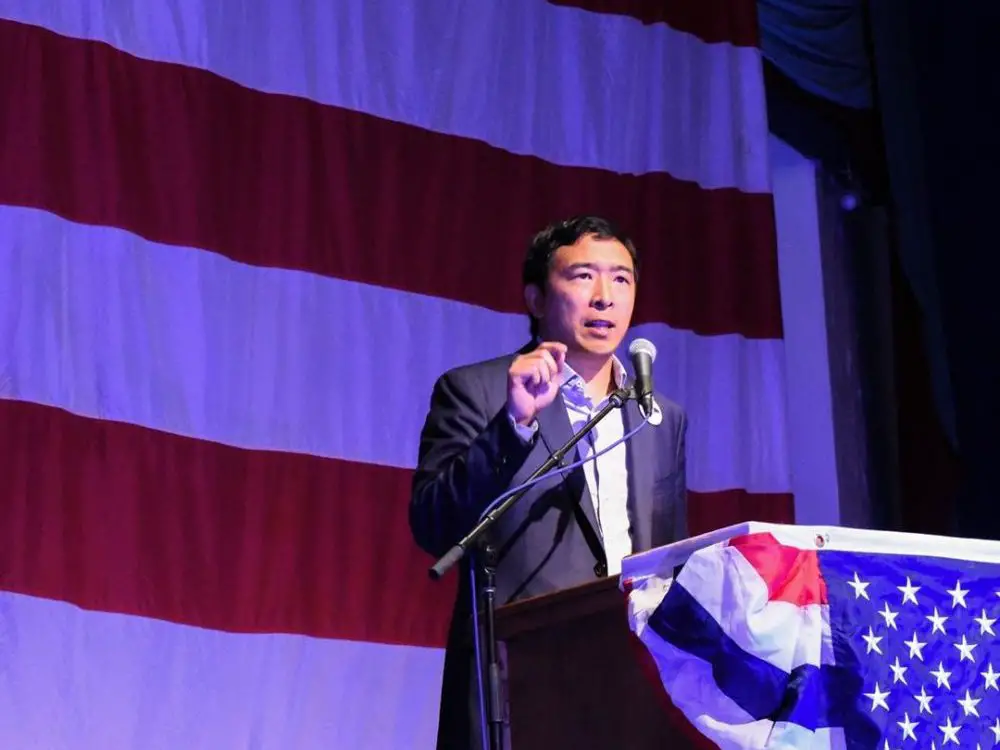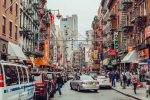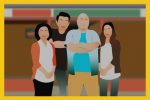In a year plagued by both widespread discrimination and a destructive pandemic, Asian Americans are stuck at a convergence of racial tensions and COVID-19 paranoia. Xenophobia, fueled by the disease’s origin in Wuhan, China, has contributed to the over 800 reports of anti-AAPI hate crimes in California alone and a national surge in anti-Asian discrimination after the term “Chinese Virus” was coined by the White House. Along with other racial injustices that have permeated headlines daily in 2020, these prejudices illustrate an American identity that is conditional for not just Asian Americans, but all minorities — an identity that can be revoked at any time.
While this conditionality has been discussed in the press, the variety of opinions within affected communities remains less publicized. All too often, the attitudes of a minority group are portrayed solely by statistics and thus left with little room for nuance. However, recent opinion pieces from actor John Cho and former presidential candidate Andrew Yang provide a window into the varying (and often conflicting) Asian American responses to COVID-fueled xenophobia. When compared side by side, Cho and Yang’s respective writings invoke theories about identity that have followed Asian Americans for decades.
The Bigger Picture
To fully understand the intentions behind both op-eds, it is necessary to evaluate the origins of each piece in addition to their actual content. Andrew Yang’s Washington Post op-ed, titled, “We Asian Americans are not the virus, but we can be part of the cure,” was published on April 1. This was months after Yang had dropped out of the presidential race as the only candidate with an East Asian background. Many people who watched the news must have been looking for his guidance as a public figure and politician while attacks on the AAPI community grew in frequency. However, the article was met with a generally negative reception from Asian Americans.
Meanwhile, John Cho of “Star Trek” and “Harold and Kumar” fame appears to have written his Los Angeles Times op-ed in response to Yang’s message. Titled “Coronavirus reminds Asian Americans like me that our belonging is conditional,” Cho’s piece never explicitly mentions Yang, but both articles touch upon the same general themes. Cho also retweeted fellow actor Steven Yeun’s disapproval of Yang’s op-ed, so he was at the very least aware and critical of Yang’s piece when releasing his own on April 22.
Same Ends, Different Means
The commonalities between Cho and Yang’s articles lie in their opening paragraphs, as the two authors personally recount their experiences with xenophobia both before and during the pandemic. Yang mentions his various run-ins with racial slurs, and Cho recalls the countless times that his Indian American co-star, Kal Penn, would be pulled aside by TSA agents for supposedly random security checks. Both of these introductions recognize that prejudice against Asian Americans has never been out of sight, but emphasize that the racialization of COVID-19 has seen “[people] look up and see someone who is different from them, whom they wrongly associate with the upheaval of their way of life,” as Yang describes.
Acknowledging and denouncing this new wave of racist aggression marks both the beginning and the end of Cho and Yang’s agreement. The problem of being viewed as an outsider is the core focus of each article, but their later paragraphs see a notable deviation in philosophy when it comes to a solution.
“I obviously think that being racist is not a good thing. But saying ‘Don’t be racist toward Asians’ won’t work,” states Yang. If advocating against bigotry has proven futile in changing the minds of racists, as Yang suggests, then the best course of action is to demonstrate what he refers to as “American-ness.”
After referencing a UCLA basketball player who often wore her jersey in public to quell xenophobic behavior, Yang concludes that Asian Americans can overcome racist perceptions by wearing red, white and blue, making donations and volunteering — thus proving that Asian Americans are “part of the cure.” For Yang, these actions “…should show without a shadow of a doubt that we are Americans who will do our part for our country in this time of need.”
In contrast, Cho argues that the narrative of demonstrating “American-ness” has already manifested in harmful “model minority” theories and cautions against dismissing the value of anti-racist advocacy. The embodiment of “American-ness” is what motivated Cho’s parents to encourage him to “…speak and act like the natives. The hope was that race would not disadvantage us — the next generation — if we played our cards right.”
While Yang’s piece envisions a resolution of racial tension through the establishment of a universal American identity, Cho describes this outlook as “the illusion of raceless-ness,” where famous people of color may blend in with the white majority as examples of a “model minority” until “a moment … comes along to remind you that your race defines you above all else.” In this case, the moment in question is the unfolding pandemic.
As an alternative to Yang’s proposal that Asian Americans “step up” in demonstrations of patriotism and utility in combatting the COVID-19 outbreak, Cho ends his op-ed by encouraging American unity in addressing the irrationality of racism. He states, “If the coronavirus has taught us anything, it’s that the solution to a widespread problem cannot be patchwork …You can’t stand up for some and not for others … Stand up for your fellow Americans.”
An Old Debate with a New Paint Job
Yang’s “We are not the virus, but we can be part of the cure” embodies an ideology about racial identity that comes into conflict with Cho’s affirmation, “I’m not going to let anyone tell me or anyone who looks like me that we are not really American.” This conflict may not be apparent at face value, but a key distinction between these two op-eds is the definition of a meaningful American identity.
Where Cho asserts that citizenship alone should be enough to claim that title, Yang believes that circumstances call for additional proof of loyalty before Asian Americans can truly be accepted as such. These arguments are nothing new and certainly not limited to the Asian American community — they are merely an extension of an assimilation-integration debate that spans centuries.
Assimilation, represented in Yang’s op-ed, is a social model whereby a minority group — especially when defined by culture or race — is responsible for adopting the customs of a majority in order to be welcomed into society. This outlook has often been argued as an inconvenient truth that must be accepted if progress is to be made. As Yang puts it himself, “The truth is that people are wired to make attributions based on appearance, including race. The best thing that could happen for Asians would be to get this virus under control so it isn’t a problem anymore. Then any racism would likely fade.”
Examples of Yang’s assimilationism can be found throughout Asian American history. The 1923 Supreme Court trial of Bhagat Singh Thind saw him fight for citizenship by arguing that Indian Americans are categorized racially as “white.” Nisei — second-generation Japanese Americans — were more likely to practice Christianity than any Eastern religion by the 1930s. Both events exemplify the adoption of or appeal to the white majority’s definition of “American-ness.” References to history can also be found within Yang’s op-ed: “During World War II, Japanese Americans volunteered for military duty … to demonstrate that they were Americans.”
On the other side of Yang’s assimilationism is Cho’s preference for integration, or multiculturalism. This social model sees the responsibility of acceptance rest on the majority, as a minority and its unique identity remain intact — merely incorporated into a larger mosaic of beliefs and practices without considerable alteration. The validity of “American-ness,” therefore, would not be contingent on how an individual’s appearance or culture conforms to a majority standard.
What is intriguing about the historical arguments for Asian American integration (and one reason why Yang’s op-ed received such notable backlash) is the fact that many of them were formed as direct responses to the failure of various assimilation efforts. Public opinion of Yang’s article seems to reflect a historical fatigue in this sense. Bhagat Singh Thind, for instance, not only wasn’t granted citizenship — his court case actually brought further restrictions upon the Indian American community.
An appeal to the majority did not work for Thind, and Cho suggests that assimilation is only accepted when the majority feels comfortable: “One moment we are Americans, the next we are all foreigners, who ‘brought’ the virus here.” Echoing this conditionality, in Thind’s court case, the Supreme Court wrote that, “What we suggest is merely racial difference, and it is of such character and extent that the great body of our people instinctively recognize it and reject the thought of assimilation.”
As Yang cited earlier, groups like the 442nd Infantry Regiment were lauded as American heroes, but he didn’t account for how these figures became known as exceptions — not overall rebuttals — to the now-debunked anti-Japanese American narratives of World War II. “Our supposed success is used as proof that the system works — and if it doesn’t work for you, it must be your fault,” Cho notes of this mindset. “My wife’s families were incarcerated in camps during World War II, even while her great-uncles were serving in an all-Japanese American battalion of the U.S. Army.”
Months later, it appears that most Asian Americans have sided with Cho on the issue, criticizing Yang’s focus on demonstrating loyalty through service and labeling his “‘Don’t be racist’ won’t work” statements as a defeatist outlook on civil rights advocacy.
However, the popularity of these two articles should not insinuate that this debate is or ever has been binary. There are plenty of dissenting opinions within all communities that simply haven’t found outlets, such as op-eds, to reach a wider audience. Perhaps one of the most notable takeaways from Cho and Yang’s discourse is the continued need for more like it.

















